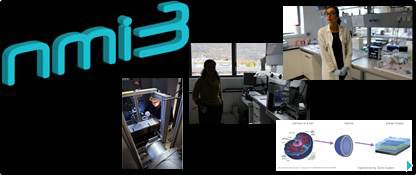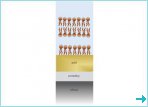Step-by-step to a neutron experiment with bio matter
Watch our new video where scientists explain us the steps taken before conducting a neutron experiment on biological samples.
Inês Crespo, 01/02/2016
Work developed within the NMI3 Joint Research Activity on Advanced Neutron Tools for Soft and Bio-Materials at the Institut Laue-Langevin (ILL) in France, is useful to researchers from all over the world. I have been to the ILL to learn how those techniques are used. The result is a video that shows us the steps taken by scientists before conducting a neutron experiment of biological samples.
Alessandra Luchini is a PhD student from the University of Naples in Italy. She was at the ILL to carry out a neutron reflectometry experiment and in the video she shows us how she prepares her samples in the ILL support laboratories. She can count on support from Giovanna Fragneto, who is the head of the Large Scale Structures and Soft Matter Science and Support groups at the ILL. Fragneto guided me through the labs to explain the steps taken before conducting neutron experiments.
The biomass from the deuteration laboratory goes in a chromatography system that separates the lipids according to their size, headgroups, and other characteristics. Once they are prepared, scientists need to produce vesicles that will be fused to form bilayers on solid substrates. This is done by sonicating the lipids to obtain very small vesicles that are put in contact with the solid surface. Quartz Crystal Microbalance measurements are used to to optimise conditions to form uniform bilayers on these surfaces. After all these steps the sample is ready to be measured in a neutron experiment.
NMI3 thanks Giovanna Fragneto for reviewing this article.
Related news
Big progress in the production of model biological membranes
An NMI3 JRA has made significant progress in the production of biological membranes that can be used for structural and dynamic characterisations. Read more.
Advanced Neutron Tools for Soft and Bio Materials JRA – latest achievements
It is time for a summary of the achievements by this JRA, which aims to provide a wider range of experimental tools to make the best use of neutron scattering for soft and bio-materials. Read more.
Biosensors will benefit from new method to produce membranes
NMI3 collaboration has taken a significant step in the production of biological membranes. To know more please click here.




